Chinese Orange Chicken is a vibrant dish that has gained immense popularity in restaurants worldwide. This flavorful recipe combines crispy chicken pieces coated in a sweet and tangy orange sauce, making it a perfect option for dinner or lunch. The delightful balance of flavors, along with the satisfying crunch from the fried chicken, creates an irresistible meal that will leave your taste buds craving more.
Preparing this dish at home is easier than you might think! With simple ingredients and straightforward steps, you can recreate that beloved restaurant experience right in your kitchen. Whether you’re looking to impress guests or simply enjoy a comforting meal with family, this Chinese Orange Chicken recipe is sure to become a favorite.
In this article, we will guide you through the essential ingredients needed for this dish and provide detailed step-by-step instructions for preparing it. Additionally, we’ll share serving suggestions and storage tips to ensure you get the most out of your homemade creation. So roll up your sleeves and get ready to dive into the world of flavor with this fantastic recipe!
Main Ingredients
Boneless Chicken Thighs
For the base of our Chinese Orange Chicken, boneless chicken thighs are preferred over breasts due to their juiciness and flavor. You’ll need about 1 pound (450 grams) of these thighs. Cut them into bite-sized pieces for even cooking. The richness of dark meat helps retain moisture during frying, ensuring each piece is tender on the inside while crispy on the outside.
Cornstarch
Cornstarch plays a crucial role in achieving that desired crispy texture on our chicken. You will require around ½ cup (60 grams) of cornstarch for coating the chicken. This ingredient not only provides crunch but also aids in sealing in moisture as the meat cooks. It’s essential for creating that signature texture often found in restaurant-style dishes.
Eggs
Two large eggs will be used to help bind the cornstarch to the chicken pieces effectively. Beat them lightly before coating your chicken cubes. The eggs create an adhesive layer that allows the cornstarch to cling better during frying, resulting in a beautifully crisp crust once cooked.
Fresh Oranges
The star ingredient of our dish is fresh oranges! You’ll need about 2 medium-sized oranges to extract both juice and zest. The juice adds sweetness and acidity to the sauce while zest contributes aromatic oils that intensify the orange flavor. Be sure to choose ripe oranges for maximum juiciness.
Soy Sauce
Soy sauce is vital for adding umami depth to our dish’s flavor profile. Use ¼ cup (60 ml) of low-sodium soy sauce for seasoning both the marinade for the chicken and part of the sauce mixture. It balances sweetness from other ingredients while keeping sodium levels manageable.
Sugar
To achieve that sweet-and-sour taste characteristic of many Asian dishes, you will need ½ cup (100 grams) of granulated sugar. This ingredient helps create a glossy glaze when cooked down with other liquids and enhances overall flavor complexity.
Rice Vinegar
Rice vinegar contributes a mild acidity that brightens up our orange sauce without overpowering it. Use 2 tablespoons (30 ml) as part of your sauce blend; it complements citrus notes well while cutting through sweetness.
Garlic
One clove of minced garlic adds aromatic depth and enhances savoriness within our dish’s sauce mixture. Garlic brings warmth and richness alongside other flavors without dominating them; finely chop or press it before adding it into your sauce preparation.
Ginger
Fresh ginger provides an enticing zing that pairs beautifully with orange zestiness! You’ll need about 1 teaspoon (5 grams) finely grated ginger root; it amplifies warmth while introducing additional layers of flavor throughout every bite.
How to Prepare Chinese Orange Chicken
Step 1: Marinate the Chicken
Begin by marinating your cubed boneless chicken thighs for at least 30 minutes—this step enhances flavors while tenderizing meat fibers! In a mixing bowl, combine soy sauce (2 tablespoons), minced garlic (1 clove), grated ginger (1 teaspoon), and half of the freshly squeezed orange juice from your two oranges (about ¼ cup). Whisk these ingredients together until they are well blended.
Add your cut-up chicken pieces into this marinade ensuring they are thoroughly coated on all sides; cover with plastic wrap or transfer into an airtight container if preparing ahead of time! Refrigerate during marination so flavors can penetrate deeply into meat fibers—this practice significantly elevates overall taste!
Step 2: Coat Your Chicken
Once marinated appropriately, remove each piece from its marinade allowing excess liquid drip off slightly—keeping too much moisture will prevent achieving crispiness later during frying! In another bowl or shallow dish combine cornstarch (½ cup) along with beaten eggs (2). Dredge each piece individually first through egg mixture then coat generously into cornstarch until fully covered—place coated pieces onto parchment paper-lined tray as you finish coating all batches!
This dual-layering technique ensures maximum crunch once fried! Let them rest briefly before moving onto frying step—it allows coatings set which prevents falling off prematurely when submerged into hot oil!
Step 3: Frying Time
To fry properly preheat vegetable oil (or peanut oil for extra flavor!) in a deep skillet or wok over medium heat until shimmering—aiming between 350°F – 375°F (175°C – 190°C). Carefully add several coated pieces without overcrowding pan; fry in batches if necessary maintaining ideal temperature consistently so they cook evenly throughout!
Cook each batch around 4-6 minutes turning occasionally until golden brown & crisp on all sides; use slotted spoon transferring fried chunks onto paper towel-lined plate draining excess oil away afterward completing all batches!
Step 4: Make The Sauce
In another saucepan combine remaining fresh-squeezed orange juice collected earlier (¾ cup), rice vinegar (2 tablespoons), sugar (½ cup), soy sauce (¼ cup), along with any leftover marinade after straining out solids like garlic & ginger bits—we want those flavors intact but not chunky!
Bring mixture gently over medium heat stirring frequently until sugars dissolve fully & bubbling occurs—allow simmering around five minutes thickening slightly before removing from heat! If desired sprinkle some cornstarch mixed water slurry here too allowing sauces thicken further reaching desired consistency!
Step 5: Combine Everything
After finishing cooking both components return fried chicken back into pan containing prepared orangey goodness—toss everything together ensuring every piece gets coated evenly across surface areas soaking up delicious flavors entirely!
Serve hot immediately garnishing with chopped green onions atop if desired—this adds freshness against rich sweetness created earlier enhancing visual appeal making presentation delightful too!
Serving and Storing Tips
Serving Suggestions
When serving your homemade Chinese Orange Chicken consider pairing it alongside fluffy white rice or fragrant jasmine rice—a perfect base absorbing residual sauces lingering beneath! Additionally steamed vegetables such as broccoli or snap peas provide color contrast whilst boosting nutrition values elevating meal quality overall making dining experience wholesome yet satisfying overall too!
For added texture toss toasted sesame seeds atop finished plates—they enhance visual appeal whilst delivering nutty undertones harmonizing brilliantly next citrusy notes present throughout dish itself creating harmonious balance pleasing palate every single time guests visit!
Storage Guidelines
If you have leftovers store them properly within airtight containers ensuring freshness remains intact across subsequent meals enjoyed later on! Refrigerate promptly after cooling down completely so bacteria doesn’t develop unnecessarily compromising taste quality eventually leading spoilage faster than expected timelines may suggest usually around three days max before needing discard afterwards!
Reheating should ideally occur using stovetop methods where possible since microwaving tends overcook proteins causing dryness resulting less enjoyable experiences altogether instead aim gentle reheating mediums preserving moisture levels retaining tenderness original preparation delivered initially without sacrificing integrity throughout process achieved prior successfully!
By following these tips you can enjoy delicious Chinese Orange Chicken at any time while maintaining optimal flavors enhancing overall dining experiences repeatedly thus extending joy derived from culinary creations shared amongst loved ones across various occasions enjoyed together forevermore!
Mistakes to Avoid
One common mistake when preparing Chinese Orange Chicken is overcooking the chicken. This can lead to a dry, tough texture that detracts from the dish’s overall appeal. To avoid this, use a meat thermometer and cook the chicken until it reaches an internal temperature of 165°F. This ensures juicy, tender pieces that absorb the flavors well.
Another mistake is using low-quality orange juice or artificial flavoring. Authenticity is crucial for achieving that vibrant taste that defines Chinese Orange Chicken. Always opt for freshly squeezed orange juice or high-quality bottled juice without added sugars or preservatives. The quality of your ingredients significantly impacts the final flavor.
Failing to coat the chicken properly before frying can also ruin your dish. Make sure to coat each piece evenly in cornstarch or flour before frying to achieve that crispy exterior. This step locks in moisture while creating a delightful crunch when fried. Additionally, don’t overcrowd your frying pan; doing so can lower the oil temperature and lead to soggy chicken.
Lastly, neglecting to balance flavors can make your Orange Chicken unappealing. In Chinese cuisine, balancing sweet, sour, and savory elements is vital. Ensure you adjust your sauce by tasting it throughout cooking. If it’s too sweet, add a splash of rice vinegar; if it lacks sweetness, incorporate more sugar or honey.
Tips and Tricks
To achieve restaurant-quality Chinese Orange Chicken at home, start with marinating your chicken pieces in soy sauce and ginger for at least 30 minutes. This enhances flavor and helps tenderize the meat effectively. You can also consider adding garlic for an extra layer of flavor.
Using high heat during frying is essential for perfecting your dish. The goal is to create a crispy exterior quickly while locking in moisture inside each piece of chicken. Use a deep-frying thermometer to maintain a consistent oil temperature around 350°F for optimal results.
When it comes to making the sauce, balance is key. Combine fresh orange juice with soy sauce, sugar, and vinegar to achieve that signature sweet-sour profile characteristic of Chinese Orange Chicken. Adjust the levels according to personal preference but remember not to overpower any single element.
Consider garnishing your dish with sesame seeds and chopped green onions for added texture and freshness just before serving. These simple additions enhance visual appeal while introducing extra flavors that complement the main dish beautifully.
Finally, serve your Chinese Orange Chicken over steamed rice or with stir-fried vegetables for a complete meal experience. This not only rounds out the flavors but also provides a satisfying texture contrast against the crispy chicken.
Suggestions for Chinese Orange Chicken
When planning a menu featuring Chinese Orange Chicken, consider pairing it with complementary dishes such as spring rolls or dumplings as appetizers. These offer variety and set an authentic tone that aligns well with Asian cuisine themes.
For side dishes, choose options that provide balance without overwhelming flavors. A light cucumber salad dressed in rice vinegar complements the sweet notes of the Orange Chicken while adding crunch and freshness. Alternatively, steamed broccoli can introduce color and nutrition without distracting from the main dish.
If you want to elevate your meal further, consider presenting it on a beautiful platter garnished with sliced oranges or mandarin segments alongside fresh herbs like cilantro or parsley. A visually appealing presentation enhances not just flavor but also enjoyment during mealtime.
If you’re serving guests who might favor milder dishes, offer an alternative protein option seasoned similarly but less spicy or tangy than traditional recipes call for—like teriyaki chicken—to ensure everyone has something they enjoy.
Lastly, don’t forget about dessert! Consider serving light options such as fruit sorbet or green tea ice cream after your meal to cleanse the palate while keeping within Asian culinary themes.
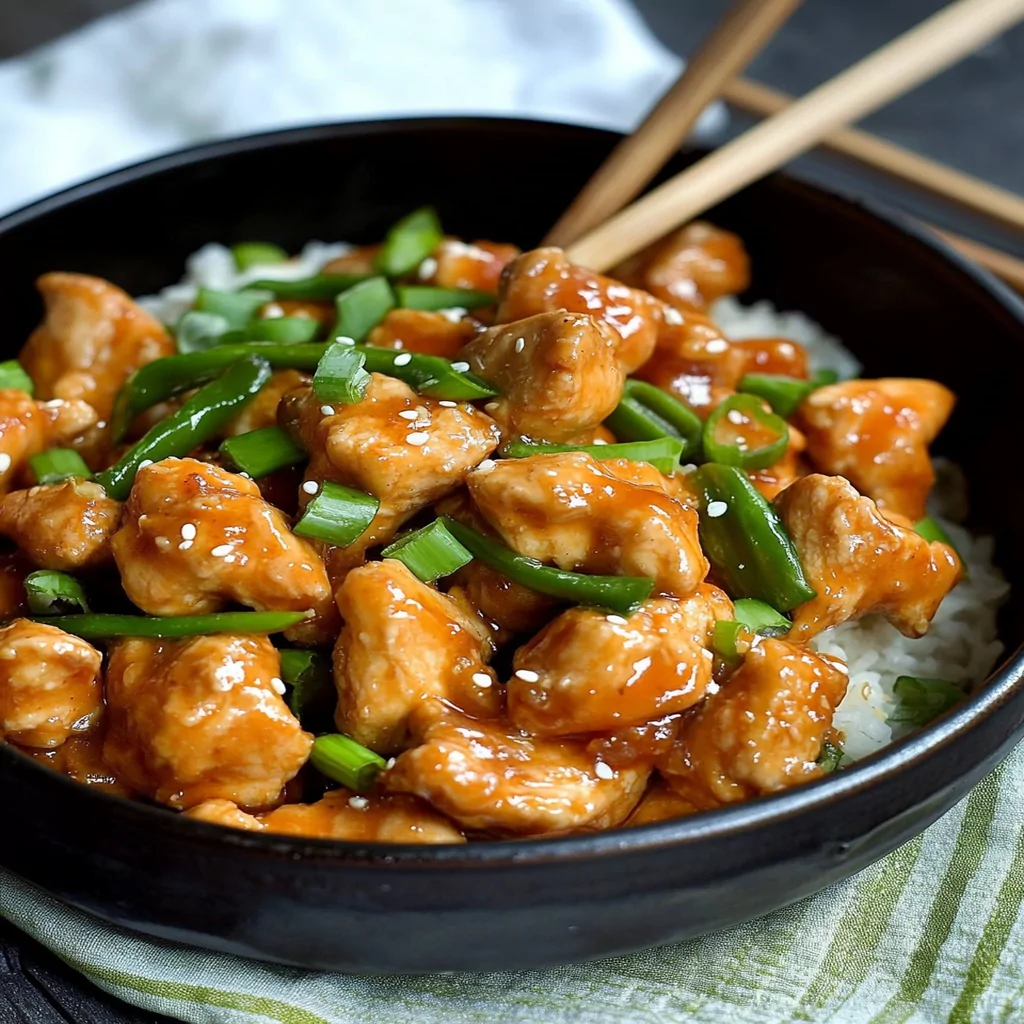
FAQs
What makes Chinese Orange Chicken different from General Tso’s Chicken?
Chinese Orange Chicken primarily emphasizes citrus flavors derived from fresh oranges or orange juice that create its signature sweet-sour taste profile. In contrast, General Tso’s Chicken features soy-based sauces infused with chili heat and garlic undertones; thus resulting in deeper savory notes rather than fruity brightness found in its counterpart.
Can I make Chinese Orange Chicken healthier?
Absolutely! To create a healthier version of this beloved dish at home, try baking instead of frying the coated chicken pieces for reduced fat content while still achieving crispiness through oven techniques like broiling towards the end of cooking time.
What type of orange should I use for making orange chicken sauce?
For optimal flavor infusion into your sauce recipe when preparing Chinese Orange Chicken at home—fresh navel oranges are recommended due their sweetness combined with some tartness yielding depth within dishes without overpowering other ingredients present during preparation stages!
Is there a vegetarian version of Chinese Orange Chicken?
Yes! You can easily swap out traditional poultry protein by substituting firm tofu cubes coated similarly in cornstarch prior frying until golden brown; then follow standard recipe steps afterward—recreating delightful vegan-friendly versions catering toward diverse dietary preferences among guests!
Can I freeze leftover Chinese Orange Chicken?
Yes! Ideally store leftovers within airtight containers once cooled down completely after initially prepared meals—this will prolong life expectancy up-to three months when frozen effectively without compromising taste quality upon reheating later on!
How do I reheat leftover Chinese Orange Chicken?
To retain crispiness upon reheating previously cooked batches—try utilizing an oven preheated at around 375°F allowing gradual warming without losing textural qualities—the microwave tends towards steaming which negatively impacts crispy exteriors established originally!
Conclusion
In summary, crafting delicious Chinese Orange Chicken requires attention to detail and understanding essential cooking techniques while avoiding common pitfalls such as overcooking proteins or using subpar ingredients like artificial juices instead of fresh ones which compromise flavor authenticity drastically! Implementing tips like marinating effectively enhances overall taste experiences when preparing this iconic dish at home too!
Pairing thoughtful suggestions regarding complementary sides elevates meals beyond mere sustenance into memorable occasions shared amongst loved ones—ensuring everyone finds joy through food! Finally addressing frequently asked questions clarifies common concerns about dietary variations whether adjusting recipes based on individual preferences ensuring satisfaction across diverse palates enjoyed universally today!
Print
Chinese Orange Chicken Recipe
- Prep Time: 30 minutes
- Cook Time: 20 minutes
- Total Time: 50 minutes
Ingredients
- 1 lb (450 g) boneless chicken thighs, cut into bite-sized pieces
- ½ cup (60 g) cornstarch
- 2 large eggs, lightly beaten
- 2 medium oranges (juice and zest)
- ¼ cup (60 ml) low-sodium soy sauce
- ½ cup (100 g) granulated sugar
- 2 tbsp (30 ml) rice vinegar
- 1 garlic clove, minced
- 1 tsp (5 g) fresh ginger, grated
- Vegetable oil for frying
Instructions
1. Marinate the Chicken:
- In a bowl, mix 2 tbsp soy sauce, half of the orange juice, minced garlic, and grated ginger.
- Add the chicken pieces and marinate for 30 minutes in the refrigerator.
2. Coat the Chicken:
- Remove chicken from marinade.
- Dip each piece in beaten eggs, then coat in cornstarch. Set aside on parchment paper.
3. Fry the Chicken:
- Heat oil in a deep skillet to 350°F (175°C).
- Fry chicken in batches for 4-6 minutes until golden brown. Drain on paper towels.
4. Make the Sauce:
- In a saucepan, mix the remaining orange juice, orange zest, soy sauce, sugar, rice vinegar, and strained marinade.
- Simmer over medium heat until slightly thickened, about 5 minutes. Add a cornstarch slurry (1 tsp cornstarch + 1 tbsp water) if needed for consistency.
5. Combine and Serve:
- Toss fried chicken in the orange sauce until evenly coated.
- Serve immediately, garnished with chopped green onions if desired.
Notes
- Substitute chicken thighs with chicken breasts for a leaner option.
- Add chili flakes for a spicy kick!
- Serve with steamed rice or stir-fried vegetables for a complete meal.

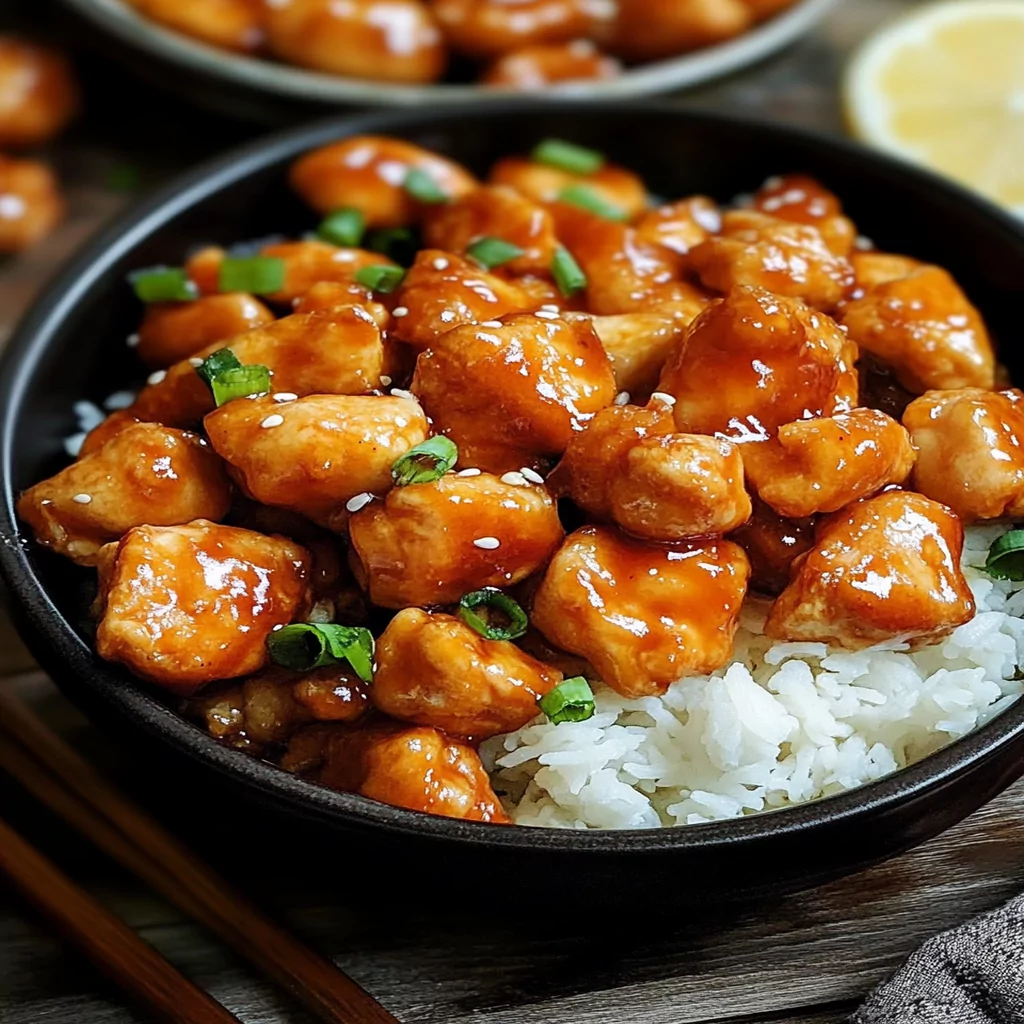
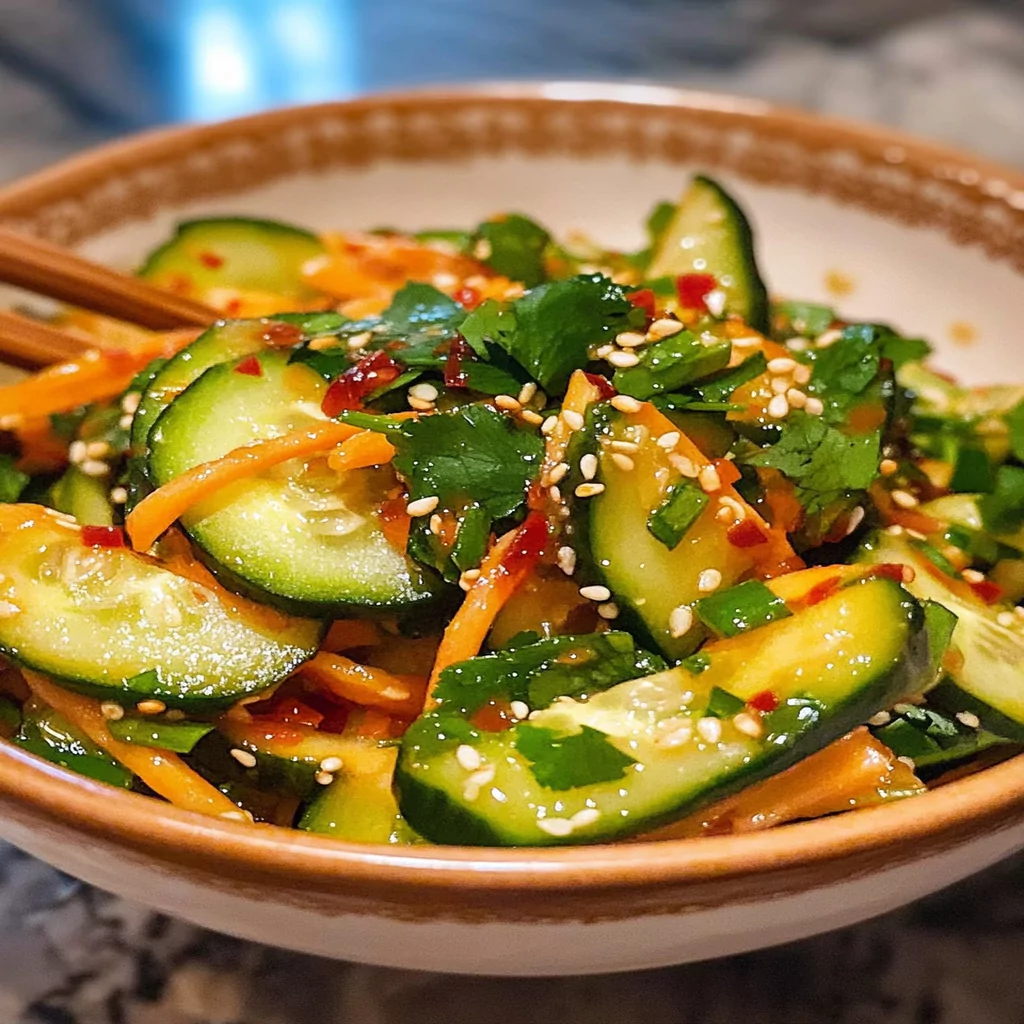
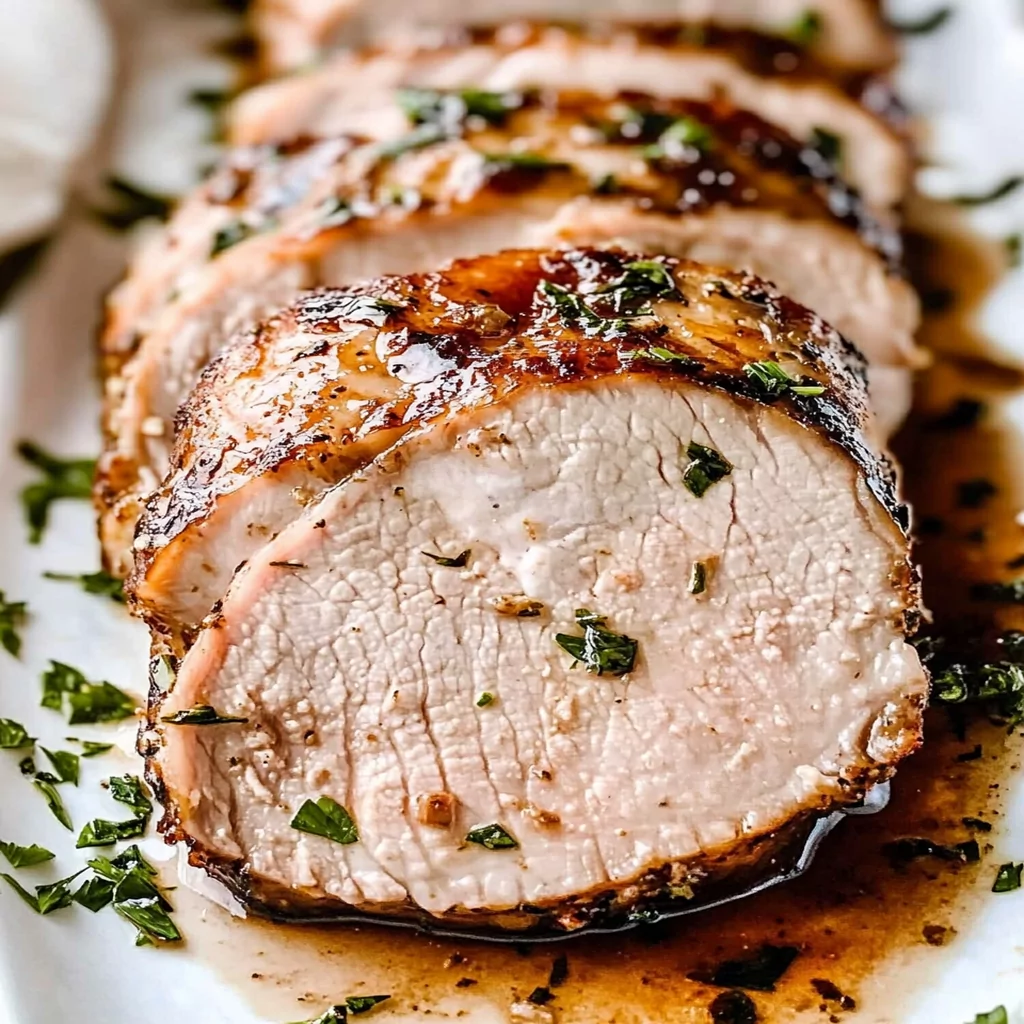
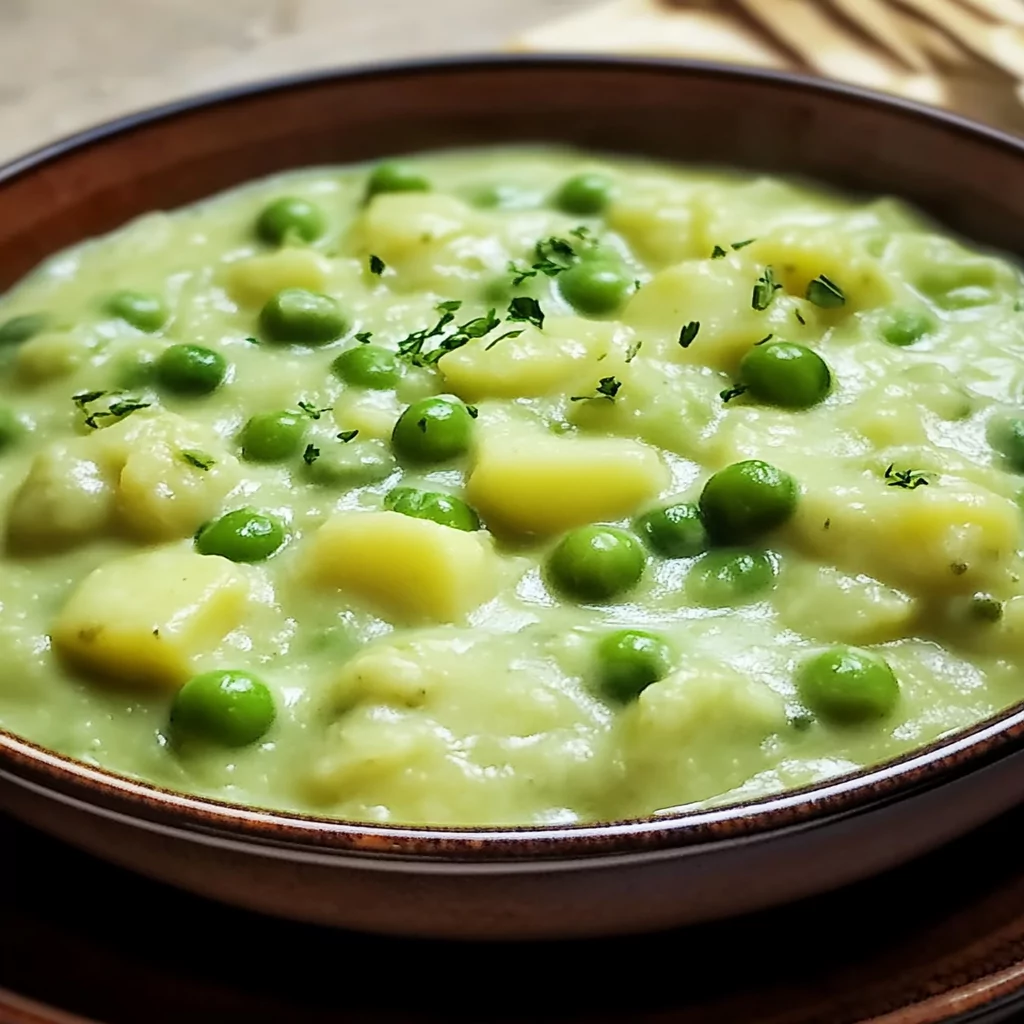
Leave a Comment